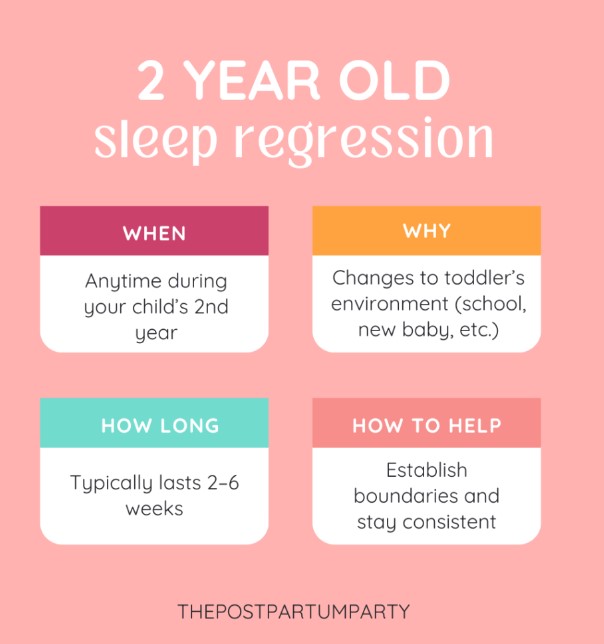BOURSESSENEGAL – If you’re a parent of a toddler, you might have heard of the 2-year-old sleep regression. This common phase can disrupt sleep routines, leaving both you and your child feeling exhausted. In this blog post, we’ll explore what sleep regression is, why it happens, and how to navigate this challenging time with practical tips.
What Is Sleep Regression?
Sleep regression refers to a period when a previously good sleeper suddenly begins to wake frequently at night or resist naps. For many toddlers, this regression occurs around the age of two. You might notice your child waking up more often during the night, having difficulty falling asleep, or even refusing to sleep altogether.
Why Does Sleep Regression Happen?
Understanding the reasons behind the 2-year-old sleep regression can help you tackle the situation effectively. Several factors contribute to this sleep disruption:
Developmental Milestones
At two years old, toddlers undergo significant developmental changes. They’re learning new skills, including language, problem-solving, and social interactions. These milestones can create excitement and anxiety, which may interfere with their ability to settle down at bedtime.
Separation Anxiety
Many toddlers experience separation anxiety around this age. They may become clingy and fearful when you leave the room, leading to nighttime awakenings. This anxiety can manifest as protests during bedtime or night wakings.
Changes in Routine
Changes in a toddler’s daily routine can also trigger sleep regression. Whether it’s a new childcare arrangement, a family move, or the introduction of a new sibling, these changes can impact your child’s sense of security, affecting their sleep.
Recognizing the Signs of Sleep Regression
It’s essential to recognize the signs of 2-year-old sleep regression. Here are some common indicators:
- Increased nighttime awakenings
- Difficulty falling asleep at bedtime
- Shorter naps or refusing to nap
- Irritability and mood swings
- Increased clinginess or need for reassurance
How Long Does Sleep Regression Last?
The duration of sleep regression varies from child to child. For some toddlers, it lasts only a few weeks, while for others, it can extend for several months. Typically, sleep patterns stabilize once your child adjusts to their developmental changes. Patience is crucial during this time.
Tips to Navigate 2-Year-Old Sleep Regression
While sleep regression can be challenging, several strategies can help ease your child’s transition and restore a peaceful sleep environment.
Establish a Consistent Bedtime Routine
Creating a consistent bedtime routine can signal to your child that it’s time to sleep. This routine can include calming activities like reading a book, singing a lullaby, or taking a warm bath. Consistency helps your toddler feel secure and ready for sleep.
Maintain a Calm Sleep Environment
Ensure that your child’s sleep environment is conducive to rest. Keep the room dark, quiet, and at a comfortable temperature. You might consider using a white noise machine to drown out any background sounds that could disrupt sleep.
Address Separation Anxiety
If your child is experiencing separation anxiety, offer reassurance and comfort. A transitional object, such as a favorite stuffed animal, can provide a sense of security when you leave the room. Gradually increase the time spent apart during the day to help your child adjust.
Encourage Independent Sleep
Encouraging your child to fall asleep independently can foster better sleep habits. If your toddler cries after you leave the room, give them a few minutes before checking in. This strategy can help them learn to self-soothe and fall back asleep without your assistance.
Limit Screen Time Before Bed
Exposure to screens can disrupt sleep patterns, so try to limit screen time in the hour leading up to bedtime. Instead, engage in quiet activities that promote relaxation and bonding.
Monitor Nap Times
Be mindful of your child’s nap schedule. While it’s essential for toddlers to nap, ensure that naps don’t occur too late in the day, as this can interfere with nighttime sleep.
When to Seek Professional Help
While sleep regression is usually temporary, there are times when you may need to seek professional help. If your child’s sleep issues persist for an extended period or if you notice any unusual behaviors, consult a pediatrician or sleep specialist. They can provide additional guidance tailored to your child’s needs.
The Importance of Self-Care for Parents
Coping with a toddler’s sleep regression can be exhausting for parents. Remember to take care of yourself during this challenging time. Prioritize self-care by getting enough rest when you can, asking for help, and finding moments for relaxation. Supporting your well-being is crucial to managing the ups and downs of parenting.
Conclusion
In summary, the 2-year-old sleep regression can be a challenging phase, but understanding its causes and implementing effective strategies can ease the transition. Establishing a consistent bedtime routine, maintaining a calm sleep environment, and encouraging independence can make a significant difference.
Every child is unique, and while this phase may feel overwhelming, it’s a natural part of development. With patience and care, you can help your toddler navigate this stage and get everyone back to restful nights.
REFERENCE : https://www.health.com/



